Yates Account
Join now
Create a Yates account today!
Sign up to join the Yates Garden Club for monthly e-mails packed with seasonal inspiration, tips for success & exclusive promotions.
Plus if you’re a Garden Club member you can take part in the Yates Growing Community - a blog to share successes, get advice & win prizes in fun challenges along the way!

Forgot password
Enter the email address associated with your account, and we'll email you a new password.

There are so many fantastic benefits that come with having plants in your home.
Lush and leafy plants help soften the hard lines of furniture. They bring the X-factor to any room, especially when you match them up with a gorgeous pot.
Even if you don't have any outdoor space, you can still enjoy gardening - any time of the day or night!
Indoor gardening is even good for your health, helping reduce stress levels and promote positivity. The combination of plants and potting mix indoors also helps to filter toxins from the air. Indoor plants are more than just a pretty face!
If you've just started on your indoor plant-growing journey, we’ve put together a list of easy-to-follow tips for you. From which plants to choose and what to grow: where to place things, to pots, potting mixes and how to care for your new plant babies. Let’s get into it.

How to Choose a Plant that's Right for You
Easy-to-Grow Options
When you're starting out, it’s best to start with plants that are hardy and don’t require too much maintenance. Once your indoor plant care skills improve and your confidence grows, then look at fussier plants.
Here are some hardy and low-maintenance plants to try:
- Arrowhead Plant (Syngonium podophyllum)
- Devil’s Ivy (Epipremnum aureum)
- Jade Plant (Crassula ovata)
- Mother-in-Law’s Tongue (Dracaena trifasciata syn. Sansevieria trifasciata)
- Peace Lily (Spathiphyllum wallisii)
- Spider Plant (Chlorophytum comosum)
Indoor Plants for Low Light
Most indoor plants will do best in a room with bright but indirect light. But, there are some hardy plants that'll tolerate lower amounts of light, including:
- Cast Iron Plant (Aspidistra elatior)
- Devil’s Ivy (Epipremnum aureum)
- Mother-in-Law’s Tongue (Dracaena trifasciata)
- ZZ Plant (Zamioculcas zamiifolia)
Sadly, unless you install artificial lighting, there aren't any plants that can grow indoors without sunlight!

Indoor Plants for Humid Rooms
Humid rooms such as a steamy bathroom, laundry or kitchen are ideal places for plants that are native to humid tropical forests. Here are some plants that will enjoy living in your bathroom:
- Moth Orchid (Phalaenopsis spp.)
- Peace Lily (Spathiphyllum wallisii)
- Parlour Palm (Chamaedora elegans)
- Flamingo Flower (Anthurium scherzerianum)

Indoor Plants for Shelves & Hanging Baskets
Plants with trailing stems look wonderful when positioned on shelves or grown in a hanging basket. Their stems can cascade down or be trained horizontally across a wall. Plants with trailing stems include:
- Devil’s Ivy (Epipremnum aureum)
- Mistletoe Cactus (Rhipsalis baccifera)
- Hoya (Hoya spp.)
- Chain of Hearts (Ceropegia woodii)

Indoor Plants for Tiny Spaces
Small plants are ideal for desktops, coffee tables and shelves. The following plants don’t take up much room and are great plants for beginners:
- Zebra Cactus (Haworthia fasciata)
- Air Plants (Tillandsia spp.)
- Baby Rubber Plants (Peperomia obtusifolia)
Plants that Aren't Safe for Pets & Children
A quick heads-up, some indoor plants may pose a risk to pets and children, from contact with plant sap or by ingestion. The following are common examples of potentially toxic indoor plants:
- Dumb Cane (Dieffenbachia spp.)
- Fiddle Leaf Fig (Ficus lyrata)
- Peace Lily (Spathiphyllum wallisii)
- Mother-in-Law’s Tongue (Dracaena trifasciata)
- Swiss Cheese Plant (Monstera deliciosa)
Monitor your children and pets behaviour around these plants: move them to an inaccessible position if required.

How to Choose Pots, and Potting-Up
Choosing the Perfect Pot
There's a beautiful selection of pots available for indoor plants. Once you've chosen an indoor plant, match the size of the plant with a new pot. The new pot should be a few centimetres larger in diameter than the plant’s existing pot. Also, match the height of the plant with the new pot (a tall plant in a shallow pot can easily topple over). A rough guide to follow is that the pot should make up about one-third of the total 'plant plus pot' height.
It’s important that your pot has drainage holes. Pots without drainage holes are very difficult to manage and it’s really easy to drown your plant. For decorative pots that don’t have drainage holes, sit a slightly smaller plastic pot with drainage holes inside.

You Won't Regret Choosing Good Potting Mix
Potted plants need to balance efficient drainage and moisture retention. If potting mix retains too much moisture, it creates ideal conditions for fungal pathogens to get established. Good-quality mix allows plant roots to remain well-aerated, with improved access to nutrients. For most plants, a premium mix like Yates Thrive Indoor Plants Potting Mix works very well.
For orchids, use a potting mix that’s been formulated for their free-draining needs, such as Yates Thrive Orchid Potting Mix.
For cacti and succulents, Yates Thrive Cacti & Succulent Potting Mix delivers the coarse and sandy 'sharp' mix that they love best.

How to Pot-Up Indoor Plants
After buying a new indoor plant, you might want to upgrade the plain plastic pot to something nicer to look at. Or, the new plant might need to be planted into a slightly bigger plastic pot. For either scenario, you’ll need some fresh potting mix. It’s very important to use a quality potting mix, to provide the best possible environment for the plant’s roots and help promote healthy plant growth.
Gently remove the plant from its existing pot and if the roots are compacted, gently tease some of them out at the base. Place the plant’s root ball in the new pot, then backfill around the roots with the fresh potting mix. Ensure that the final level of the potting mix is the same as the level of the existing potting mix around the plant. The roots should only be half a centimetre underneath the mix. Water in well, to help settle the fresh potting mix around the roots. Giving freshly potted plants a soak in seaweed solution really helps to cut down on transplant shock and stress.
How to Feed Indoor Plants
Potted plants are completely reliant on us to give them nutrients for healthy growth. So, it’s important to feed indoor plants regularly with the right fertiliser. One of the easiest ways to feed indoor plants is with Yates Thrive Plant Food Spikes Plants & Ferns. These fertiliser spikes are a concentrated source of nutrients that will feed indoor plants for up to two months. They are super easy to use – just push a spike into the potting mix mid-way between the pot wall and the plant stem. For feeding orchids, use Yates Thrive Plant Food Spikes Orchids. For feeding cacti and succulents, use Yates Thrive Plant Food Spikes Cacti & Succulents.

How to Water Indoor Plants
Two of the biggest culprits for indoor plant death are underwatering and overwatering. Underwatering leads to plants wilting and leaves dying. Whereas overwatering results in yellowing and dying leaves, and Root Rot. In either case, prolonged dryness or wetness can be fatal.
There's no one rule when it comes to watering indoor plants. Different plants require different levels of moisture. The plant tag should provide some information on whether it needs consistent moisture (for example, Maidenhair Ferns) or prefers to dry out in between watering (like ZZ Plants). Alternatively, consult our Yates’ Growing Guides for an extensive range of indoor plants, cacti and succulents. Information includes watering requirements for the individual plant's needs.
To check the moisture level in the potting mix, dig your finger into the top few centimetres of mix. You’ll be able to feel if it’s dry, or moist.
Indoor plants can be gently watered from above with a watering can with a narrow spout. Apply the water directly over the potting mix. Alternatively, for plants in pots with drainage holes, the pot can be ‘dunked’ in a bucket or sink of water. The water level should be around two-thirds the height of the pot. Leave the pot in the water for 15 minutes and water will soak up into the potting mix through the drainage holes. After dunking, leave the pot to drain before placing it back on its saucer or inside its decorative pot.
To avoid overwatering, do not leave water in plant saucers. For plain plastic pots that sit inside a hole-free decorative pot, do not allow water to collect in the base.

Common Problems and Troubleshooting
Just like outdoor plants, indoor plants can be affected by a range of pests and diseases or become unhealthy due to incorrect care. Here are some of the most common problems that you might encounter...
Why Are My Indoor Plant Leaves Going Yellow?
Two of the main causes of yellowing leaves are watering and lack of nutrients. Check the moisture levels in the potting mix and ensure plants are fed regularly.
Why Are My Indoor Plant Leaves Going Brown?
Brown leaf tips can be caused by overwatering, lack of humidity (for plants native to tropical areas) or being burnt by direct light. Check moisture levels in the potting mix, during hot and dry weather mist humidity-loving plants with water and move plants away from direct sunlight.
Why is My Indoor Plant Wilting & Droopy?
Confusingly, wilting can be due to over or under watering. Check moisture levels in the potting mix and either reduce or increase watering to suit the plant’s moisture preference.
Why Aren't My Indoor Plants Growing?
Lack of nutrients can lead to poor or slow growth. Feed indoor plants every two months from spring to autumn.
Plants that have been in the same pot for an extended period may also have run out of room and nutrients. Repot into a slightly larger pot to help promote new growth.
Why Aren't My Indoor Plants Flowering?
Flowering indoor plants such as Hoyas, Peace Lilies and Orchids may not flower if lacking in nutrients and/or not receiving enough sunlight. Move plants to a brighter position but still out of direct sunlight and feed them regularly.

Insect Pests of Indoor Plants
Common pests of indoor plants include Aphids, Mites, Mealybugs and Scale. You may notice the pests themselves, or leaves starting to discolour and plants visibly suffering. Regularly check your plants for signs of pests; as soon as you see evidence, spray plants with Yates Nature’s Way Citrus & Ornamental Spray. It works via direct contact with the pests, so good coverage under leaves is essential (that's where the critters are likely to be hiding).
What Are These Flying Insects Hovering Around My Indoor Plants?
They're probably Fungus Gnats. Fungus gnats are incredibly annoying tiny flying insects that hover around indoor plants. The adult gnats lay eggs in the potting mix, that hatch into larvae, which feed on the plant roots and damage them. To help stop the fungus gnat lifecycle apply Yates Gnat Barrier over the surface of the potting mix.
Diseases of Indoor Plants
Common diseases of indoor plants include Powdery Mildew and Leaf Spots. Individual affected leaves can be removed and thrown in the bin. If multiple leaves are affected, spray with Yates Rose Gun or Yates Liquid Copper Fungicide (check the labels for diseases controlled).



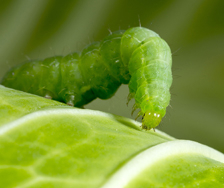
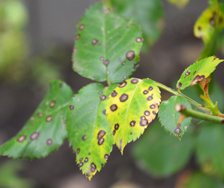
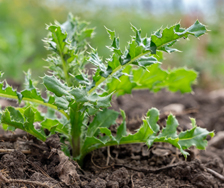
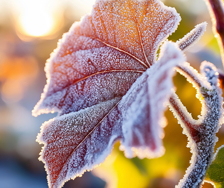
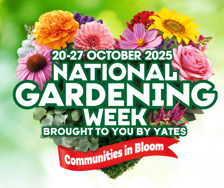









Share
Share this article on social media